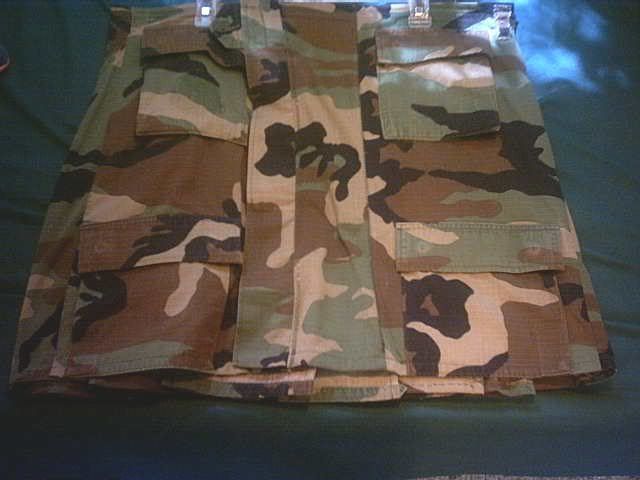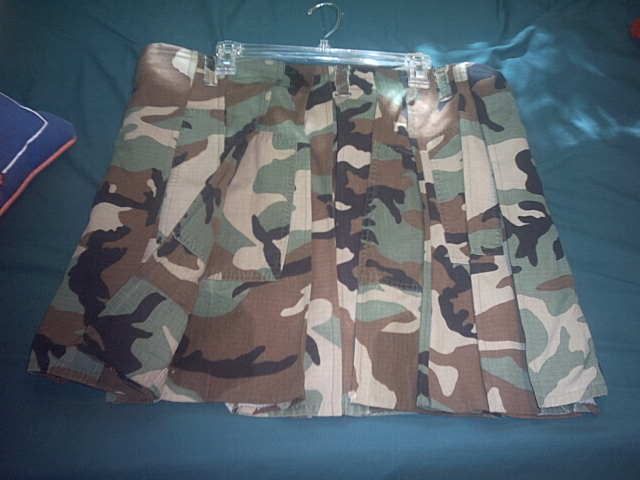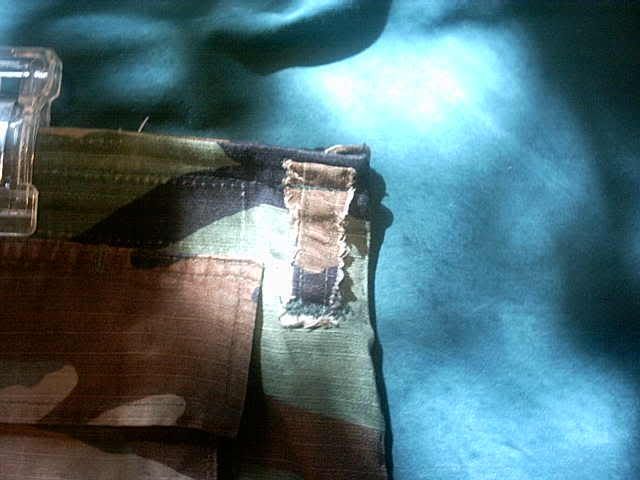This is another kilt construction that was driven by the fabric. I happened on
to this polyester fabric somewhere and I cannot for the life of me remember
where. My penny pinching gene however remembers that it was one dollar a yard.
I can't buy shop rags for that so I could not pass it up.
It is very light camo polyester. It is so light that if you hold it up to the
light you can see right through. That's just right since in a minimum kilt
there will be three layers in back and two in front. I am not the authority on
what is minimum but that is my minimum. I have figured out how to make a kilt
like garment that has less since making this one and still look like a kilt but
that will come later in a Kilted Towel Post.
 |
| Front |
width. It is about 1/3 my waist measurement. Contemporary kilts seem to go for
something around that number some are more narrow but this is what I liked best. It makes the pleats show from the front and makes for less interference of the cargo pockets with the pleats.
In the photo below the reverse box pleat is in the center. All the pleats are sewn down three inches from the bottom of the waistband. The outer edge of each pleat is sewn in as well but not the inner edge. That was not necessary with this fabric but I was having so much fun with the machine I couldn't stop myself. (I have resisted buying a nail gun because of that sort of compulsive excess.) It does make it truly wash and wear. I can take it out of the dryer, shake it out and wear it.
 |
| Tail Feathers |

This photo taken in September 2009 was taken in the garden mainly to show one of the walking sticks I made from the fallen gifts from the trees caused by hurricane Gustav. It does show the length just below the top of the knee cap and the cargo pocket on my right side.
This is the kind of work that this light weight kilt was made for. If you look close you can see the left side cargo pocket. I was cutting tin for the roof of the generator lean too and it was hot out. Even as lightweight as this kilt is it's still plenty hot. I am working on a design that vents better. The ideal would be to take it off when it gets that hot but then there would be visits by the authorities protecting innocent eyes from that spectacle and the paperwork just wouldn't be worth it. I will admit to having done that inside the shop when it was 95 degrees squared (meaning the humidity equals the temperature).
The camo pattern hardly shows blood.


























